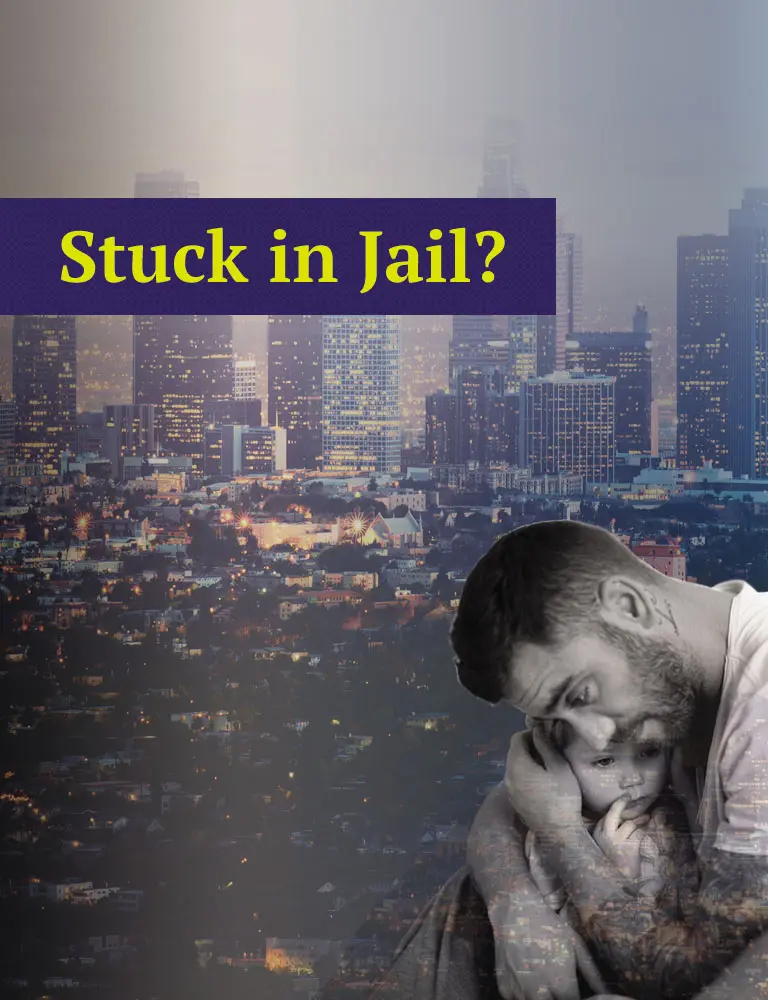Bail is a financial commitment such as cash, a bond or property that is held by the government on behalf of criminal defendants that are released while awaiting trial. The goal of bail is to ensure that defendants appear in court for trial. The concept of bail dates back thousands of years, with friends and family who would informally promise the authorities that they would be responsible for ensuring that a person charged with a crime would not flee. The practice of collateral to ensure compliance was common in the England and became codified in the United States shortly the establishment of independence. Getting financial help to pay to make bail has a long history and it’s just as important now as it was thousands of years ago. If you’ve been charged with a crime and you’re eligible for bail, an experienced California bail bond agency can usually have you back home within hours. Mr. Nice Guy Bail Bonds has a wide range of payments options and payment plans - call 844-400-2245 to get out of jail.
The Judiciary Act of 1789
The Judiciary Act of 1789 established that bail must be set for all criminal defendants that are not charged with crimes punishable by death. The law left it to judges to use their discretion to set reasonable bail that did not violate the Eighth Amendment to the United States Constitution stating that “excessive bail shall not be required, not excessive fines imposed, nor cruel and unusual punishment inflicted.” For close to one hundred years after this law was passed, criminal defendants could usually only be released if they could raise enough funds from their own resources and contributions from family and friends. An interesting aspect of this statute and it’s interpretation is that it did not distinguish between criminal defendants before of after conviction, so wealthy people that were convicted of crimes were often sent home in exchange for a government lien on their property. Believe it or not, this distinction was not clearly made until the revision of the Federal Rules of Criminal Procedure in 1946. It’s important to remember that these are federal laws and that the vast majority of crimes are punishable under state laws, but state laws has tended to mirror the federal laws.
Bail Bondsmen to the Rescue
The bail bond business came into being to solve an essential problem - the bail system gave an unfair advantage to wealthy people with large amounts of liquid assets, whereas middle class and poor people could rarely make bail. The first bail bond agency was established by Peter and Thomas McDonough in San Francisco in 1898 offering to lend the majority of bail amount to criminal defendants that could pay them a small percentage of the amount that they posted. This small California business became the model for an industry that now lends needy people over fourteen billion dollars a year, helping them to avoid incarceration prior to trial. The majority of people released on bail are charged with the crimes of assault and battery, theft and public intoxication. Criminal defendants are much more likely to be able to successfully build their defense cases when they are released on bail, making bail bonds agencies an integral part of the helping provide a more fair and equitable justice system.
Bail Reform Act of 1966
The Bail Reform Act of 1966 was the first major change in federal law since the Judiciary Act of 1789. Under this new law, a judge must choose the least restrictive alternative that would adequately ensure that a criminal defendant would appear to stand trial. The goal of the law was to create a presumption of release, which imposed a substantial burden on prosecutors to present evidence that the defendant was likely to flee to avoid prosecution. The flaw in this well intentioned legislation was that dangerous criminals were often released into the community where they would commit further crimes, resulting in escalating the amount of violent crimes committed throughout the country.
The Comprehensive Crime Control Act of 1984
The Bail Reform Act of 1984 amended the Bail Reform Act of 1966 to allow for consideration of the danger that a particular defendant may pose to the community. This law set forth specific detailed circumstances where bail could be denied that expanded well beyond just capital offenses and included many violent offenses and repeat felony charges. The law was upheld by The Supreme Court against a challenge in the case United States v. Salerno, holding that pretrial detention based on community-danger was constitutional based on the defendant’s “dangerousness.” The provisions in this law were echoed in many state laws, including the laws of California that began to restrict the use of bail and/or require high bail amounts for violent crimes where the defendant could pose a substantial risk of harm to a victim, such as cases of domestic violence. If bail has been set on your case and you don’t have the cash or credit for release, you should call an experienced California bail bond agency to discuss purchasing a bond.
The Adam Walsh Amendments
The Adam Walsh Child Protection and Safety Act (AWA,) this 2006 law amended the 1984 Act to provide that defendants charged with crimes against minors must be confined under curfew and required to check in regularly with law enforcement agencies and may be monitored or tracked. This led to an increased use of restrictions placed on release for a wide range of criminal defendants. For example, persons charged with driving while intoxicated may be released with the requirement that they use an interlock device that will not allow their car to start if they are under the influence of alcohol. Other restrictions might include home arrest, the use of ankle bracelets and other tracking and movement restrictions.
Top Bail Bond Agency in Santa Ana
If you’ve been charged with a crime, your first call should be an experienced bail bond agency that knows how to get you released from jail quickly. Once you’re back home, you are in a much better position to plan your defense. Mr. Nice Guy Bail Bonds accepts a wide range of payment options and payment plans. You can pay for your bail bond with cash, credit cards or cryptocurrency. If you’re employed and have good credit, you might be able to get out of jail with no money down and pay later. Call to 844-400-2245 to get out of jail ASAP!







